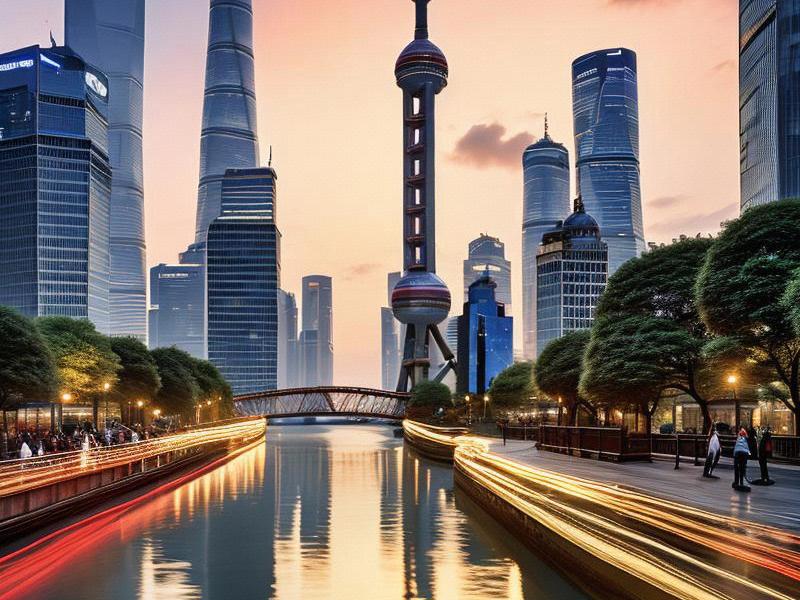Shanghai and the Surrounding Area: A Dynamic Hub of Economic and Cultural Development
⏱ 2025-04-30 00:53 🔖 阿拉爱上海419
📢0℃

Shanghai, often referred to as the "Pearl of the Orient," is the largest city in China and one of the most influential global financial centers. Its strategic location at the mouth of the Yangtze River makes it a crucial hub for trade and commerce. The city's skyline, dominated by iconic structures like the Oriental Pearl Tower and the Shanghai Tower, symbolizes its modernity and ambition.
The surrounding areas of Shanghai, including cities like Suzhou, Hangzhou, Ningbo, and Wuxi, form part of the broader Yangtze River Delta (YRD) region. This region is known for its high economic productivity, advanced infrastructure, and strong manufacturing base. Together, Shanghai and its neighboring cities account for a significant portion of China's GDP and are home to some of the country's most dynamic industries.
One of the key drivers of the economic success of Shanghai and its surrounding areas is the region's commitment to innovation and technology. Shanghai has established itself as a global leader in sectors such as finance, logistics, and information technology. The city's free trade zones and pilot programs for economic reform have attracted numerous multinational corporations and startups, creating a fertile ground for innovation.
Suzhou, often dubbed the "Venice of the East," is renowned for its classical gardens and silk production. However, the city has also transformed into a major hub for high-tech manufacturing and software development. Its proximity to Shanghai allows for seamless collaboration and integration with the larger metropolis, benefiting both economies.
上海品茶网
Hangzhou, the capital of Zhejiang province, is another city that has leveraged its strengths to thrive in the regional economy. Known for its beautiful West Lake and rich cultural heritage, Hangzhou has emerged as a leader in e-commerce and digital services. The city is home to Alibaba Group, one of the world's largest e-commerce companies, which has played a pivotal role in driving the digital transformation of the region.
Ningbo, located on the eastern coast of China, is a major port city and a significant center for international trade. Its well-developed shipping industry and advanced manufacturing capabilities make it an essential part of the regional supply chain. Ningbo's efforts to enhance its port infrastructure and promote sustainable development have further solidified its position as a key player in the YRD region.
Wuxi, situated between Shanghai and Suzhou, is known for its strong industrial base and focus on high-tech industries. The city has invested heavily in research and development, particularly in fields such as biotechnology and clean energy. Wuxi's strategic location and robust infrastructure have made it an attractive destination for businesses seeking to expand in the region.
419上海龙凤网
The integration of Shanghai and its surrounding areas is not limited to economic cooperation; it also extends to cultural exchange and regional identity. The shared history and cultural heritage of the YRD region have fostered a sense of unity and mutual support among its cities. Festivals, art exhibitions, and cultural initiatives serve as platforms for showcasing the region's rich traditions and promoting cross-cultural understanding.
The regional government has taken significant steps to enhance cooperation and coordination among the cities. Initiatives such as the establishment of the Yangtze River Delta Integration Development Plan aim to crteeaa more cohesive and competitive regional economy. These efforts include improving transportation networks, harmonizing policies, and promoting the free flow of goods, services, and people across the region.
Transportation plays a crucial role in connecting Shanghai and its surrounding areas. The city's extensive metro system, high-speed rail network, and international airports provide convenient access to destinations within and beyond the region. The ongoing expansion of these infrastructure projects will further strengthen the connectivity and integration of the YRD region.
上海贵族宝贝sh1314
Environmental sustainability is another critical aspect of the region's development. Shanghai and its neighboring cities are committed to addressing environmental challenges and promoting green development. Initiatives such as the construction of eco-friendly buildings, the promotion of renewable energy, and the implementation of waste management programs demonstrate the region's dedication to sustainable practices.
The future of Shanghai and its surrounding areas looks promising, with continued investment in innovation, infrastructure, and environmental sustainability. The region's ability to adapt to global trends and challenges will be crucial in maintaining its competitive edge and driving long-term growth.
In conclusion, Shanghai and its surrounding areas represent a dynamic and integrated region that combines economic strength, cultural richness, and regional cooperation. The cities' collective efforts to embrace innovation, enhance connectivity, and promote sustainability will ensure their continued success on the global stage. As the heart of the Yangtze River Delta, this region will undoubtedly play a pivotal role in shaping China's future and contributing to global development.
Shanghai's Renaissance: A Journey Through the City's Modern TransformationShanghai's Entertainment Clubs: A Thriving Nightlife SceneThe Shanghai Spark: How Women Are Redefining China's Global CityShanghai 2045: The Rise of China's Smartest MegacityShanghai's Thriving Entertainment Clubs: A Nightlife RenaissanceSilk & Silicon: The Dual Identity of Shanghai's Modern WomenA Glimpse into the Vibrant Nightlife of Shanghai: An Overview of Shanghai Entertainment VenuesShanghai & Yangtze Delta: The Quantum-Climate Civilization PrototypeA Comprehensive Exploration of Shanghai and Its ProspectsShanghai's Semicircle: A Journey Through the Urban and Rural Divide
Shanghai's Entertainment Clubs: A New Era of Nightlife and Cultural ExchangeShanghai's Nightlife Renaissance: How Luxury Clubs Redefine Urban EntertainmentPhantom of the Bund: How Shanghai's Entertainment Palaces Are Writing the Future of NightlifeSilicon Bund: How Shanghai Became China's Unexpected Tech PowerhouseShanghai's Transformation: A Journey of Urban Renewal and Cultural RenaissanceShanghai's Style Revolution: How Local Women Are Redefining Chinese Beauty StandardsVelvet Ropes & Digital Dreams: Shanghai's Next-Gen Entertainment Palaces Redefine Nightlife LuxuryExploring the Sights and Sounds of Shanghai and Its SurroundingsThe Shanghai Femme: How China's Most Cosmopolitan Women Are Redefining Beauty, Power and CultureShanghai 2030: The Making of a Future-Ready Megacity

